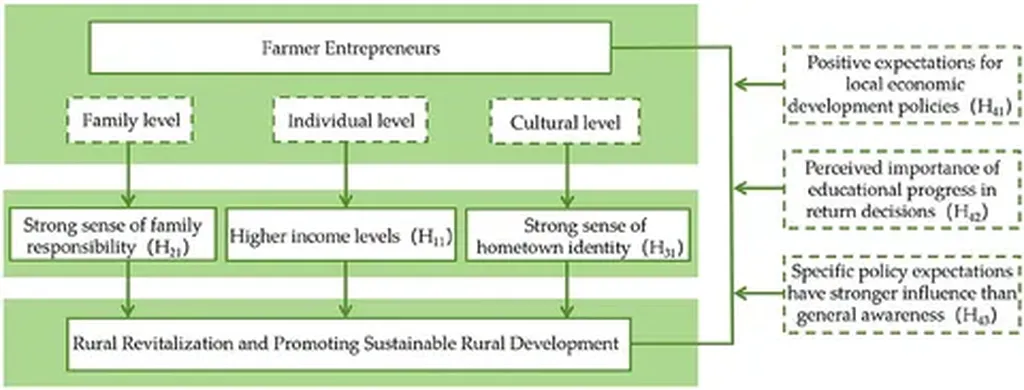In the heart of China’s northern Jiangsu region, a unique approach to rural development is unlocking new pathways for farmers to achieve sustainable income growth. This innovative strategy, known as distinctive rural development, is leveraging local resources to enhance the vitality and sustainability of farmers’ livelihoods. A recent study published in *Frontiers in Sustainable Food Systems* (《可持续食物系统前沿》), led by Hongqi Chen from the College of Economics and Management at Nanjing Forestry University, sheds light on how this approach is transforming rural economies.
The study, which employs a dynamic configurational perspective, examines three key dimensions of distinctive rural development: agricultural development, tourism cultivation, and cultural infrastructure. By analyzing these factors within the distinctive industrial system framework, the researchers identified four primary pathways that drive farmers’ sustainable income growth.
“Our findings reveal that a single factor is not a necessary condition for promoting farmers’ sustainable income growth,” Chen explained. “However, low levels of annual income from specialized industries constitute a necessary condition for the maintenance of low-income levels among farmers.”
The four pathways identified in the study are:
1. **Composite Value-Added Driven Type**: This pathway focuses on enhancing the value of agricultural products through processing and diversification.
2. **Agriculture-Oriented E-Commerce Driven Type**: Leveraging e-commerce platforms to expand market reach and increase income.
3. **Agriculture-Oriented Chain-Based Collaborative Type**: Building collaborative networks along the agricultural supply chain to create added value.
4. **Innovation-Driven Agriculture-Tourism Co-Driven Type**: Combining agricultural production with tourism to create new revenue streams.
The study highlights that distinctive rural development not only mitigates the constraints associated with traditional income growth pathways but also opens up new avenues for increasing income. This holistic approach considers the nonlinear interactions of various factors, providing a more comprehensive understanding of rural economic systems.
The implications of this research are significant for the energy sector, particularly in rural areas. As distinctive rural development fosters economic growth and diversification, it can also drive demand for sustainable energy solutions. Farmers and rural communities may increasingly seek energy-efficient technologies and renewable energy sources to support their expanding enterprises. This shift could create new opportunities for energy companies to innovate and cater to the evolving needs of rural economies.
Moreover, the study’s application of dynamic fuzzy-set Qualitative Comparative Analysis (fsQCA) to rural development advances configurational theory by emphasizing the importance of nonlinear factor interactions over isolated variables. This approach offers a more nuanced understanding of how different factors contribute to sustainable income growth, paving the way for more effective rural development strategies.
As the world continues to grapple with the challenges of rural revitalization and sustainable development, the insights from this study provide valuable guidance for policymakers, researchers, and practitioners. By embracing distinctive rural development, communities can unlock new pathways to prosperity, ensuring a more sustainable and resilient future for farmers and rural economies alike.

